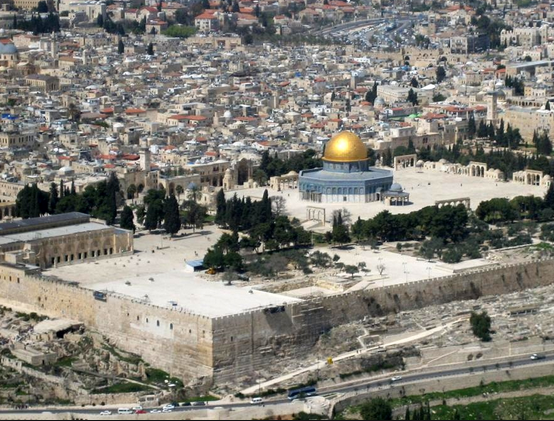nearby was the place of the city
28-03-2014 - Posted by Andre Piet In my previous blog, I pointed to the fact that Matthew, as well as Mark and Luke, describe the tearing of the curtain of the temple as a phenomenon that was visible from Golgotha. That places Golgotha, necessarily, on the east side of the city. However, there is still another, important geographical indication that points in the same direction. In John 19, we read the following:
In my previous blog, I pointed to the fact that Matthew, as well as Mark and Luke, describe the tearing of the curtain of the temple as a phenomenon that was visible from Golgotha. That places Golgotha, necessarily, on the east side of the city. However, there is still another, important geographical indication that points in the same direction. In John 19, we read the following:
19 Now Pilate writes a title also, and places it on the cross. Now it was written, “Jesus the Nazarene, the King of the Jews.” 20 This title, then, many of the Jews read, for the place where Jesus was crucified was near the city, and it was written in Hebrew, Latin and Greek.
Unfortunately, this translation does not reflect what is stated in the original. Below is an interlinear manifest:  Jesus was crucified near (literally translated) “the place of the city”. It is an expression that refers to the temple, which is often called “the place” (Deut. 12:11; Hand 6:13; 21:28). Earlier in John’s gospel account, we read that Jesus said to the Samaritan woman that “Jerusalem is the place where men ought to worship” (John 4:20). And in John 11:48, Jewish leaders spoke about the temple as (literally) “our place.” If the formulation in John 19 would have read that Jesus was crucified near the city, then the crucifixion could have occurred on all sides of the city. But if Jesus was crucified near “the place of the city”, it indicates the direction of the Mount of Olives. After all, the temple lay against the walls on the east side of the city. So, if Jesus was crucified “outside the gate” (Heb.13:12), but near “the place of the city”, this, necessarily, has to be to the east of the city. The crucifixion took place just before the feast of Passover, so that the city, at that time, received a stream of pilgrims through the best known route (i.e. the Mount of Olives). These pilgrims passed by the place where Jesus was crucified and they could read the inscription on top of the cross, that was written in three languages. That Golgotha was located “near the place of the city”, is more than just a geographical designation. It creates a link between the two places. A link between the temple, where that day countless lambs, for the Passover, would be slain and the true Passover that, demonstratively, hung there as the crucified King of the Jews.
Jesus was crucified near (literally translated) “the place of the city”. It is an expression that refers to the temple, which is often called “the place” (Deut. 12:11; Hand 6:13; 21:28). Earlier in John’s gospel account, we read that Jesus said to the Samaritan woman that “Jerusalem is the place where men ought to worship” (John 4:20). And in John 11:48, Jewish leaders spoke about the temple as (literally) “our place.” If the formulation in John 19 would have read that Jesus was crucified near the city, then the crucifixion could have occurred on all sides of the city. But if Jesus was crucified near “the place of the city”, it indicates the direction of the Mount of Olives. After all, the temple lay against the walls on the east side of the city. So, if Jesus was crucified “outside the gate” (Heb.13:12), but near “the place of the city”, this, necessarily, has to be to the east of the city. The crucifixion took place just before the feast of Passover, so that the city, at that time, received a stream of pilgrims through the best known route (i.e. the Mount of Olives). These pilgrims passed by the place where Jesus was crucified and they could read the inscription on top of the cross, that was written in three languages. That Golgotha was located “near the place of the city”, is more than just a geographical designation. It creates a link between the two places. A link between the temple, where that day countless lambs, for the Passover, would be slain and the true Passover that, demonstratively, hung there as the crucified King of the Jews. ![]()

 English Blog
English Blog